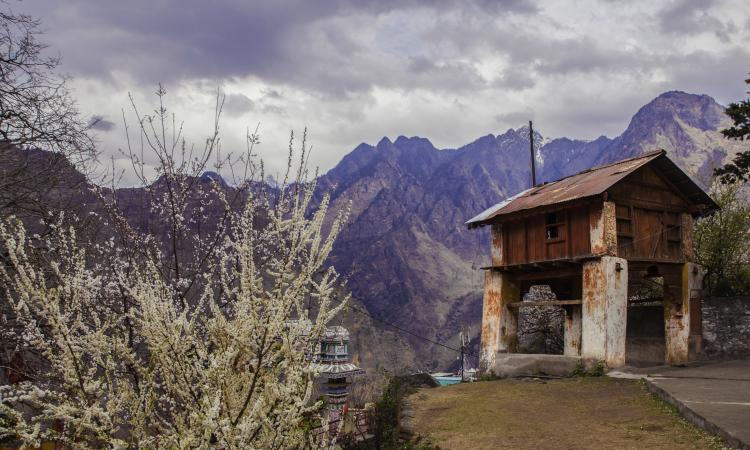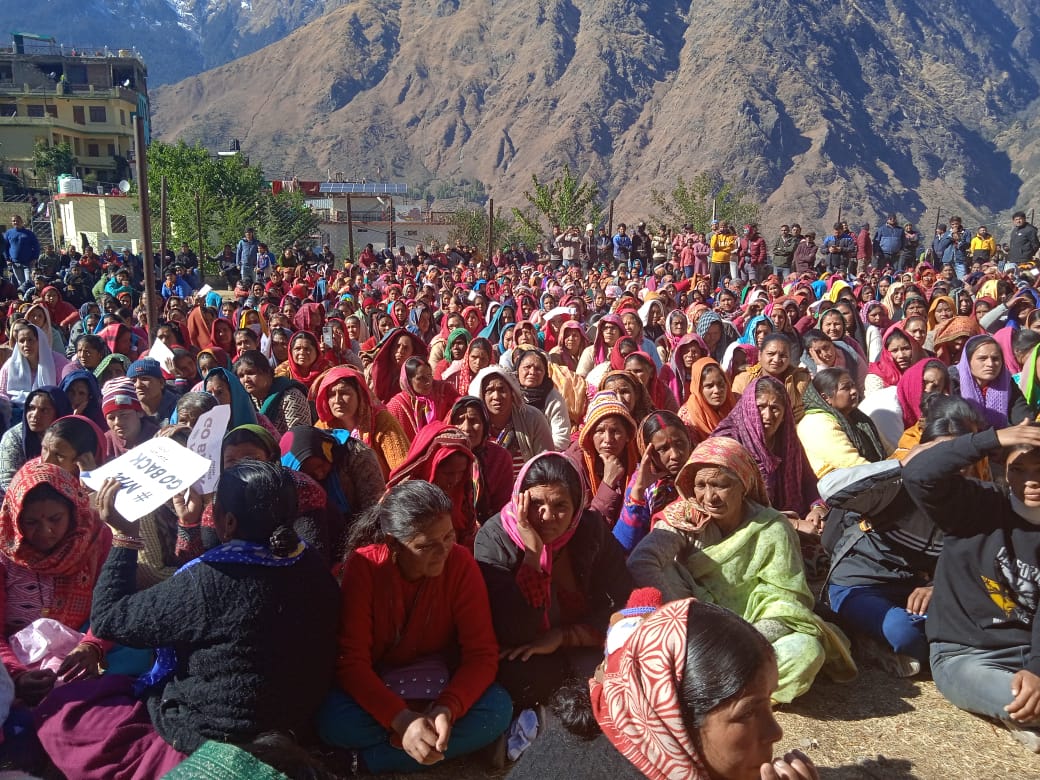
The residents of Joshimath in Uttarakhand are coming out in protest. Land subsidence in the region has put their lives, houses, and town at risk and impacted the surrounding land. As part of the relief efforts, at-risk families are being shifted to temporary relief centres, and work is underway on building transition centres, where they can stay till a long-term solution can be worked out.
Newspaper reports and colleagues who lead development work in Uttarakhand tell the stories of affected people protesting the development activities that have created this situation and what they see as inadequate relief and rehabilitation operations, as they are demanding proper rehabilitation in Joshimath. While these issues need urgent resolution, we also need to step back and understand the implications of this ecological disaster and the lessons we need to learn to deal with what is increasingly becoming our fragile planet.
First, we must remember that the Himalayas are the youngest mountain range and are geologically fragile. The Himalayas are still rising as the Indian tectonic plate is pressing against the Eurasian plate. The entire Himalayan – Hindukush area is prone to shifts from seismic activity – it is an earthquake-prone area. A paper on the deformation of the Earth’s crust across the Garhwal Himalayas, the region in which Joshimath falls, speaks about an Indian plate motion of more than 5.5 cm per year.
The Himalayas also have the third most extensive repository of glacial ice, which is why this region is often called a “third pole” of our planet. These glaciers feed rivers that support millions of people across several countries, including India. Thus the seismic fragility and the hydrological importance of the Himalayas increases the stakes for construction work.
Mountainous regions, in any case, pose a more significant challenge as there is a need to cope with extremes of environment, and horizontal space is a minimal resource. Therefore, settlements and economic and developmental activities in the Himalayas need to be planned and executed with a detailed understanding and knowledge of geology, ecosystems and climate science.
Joshimath is now in the news, but many other cities in the Himalayan range could be as prone to risk and share the vulnerabilities evident in this beleaguered mountain town.
In the Joshimath area, there have been several micro-seismic events, some of which continue to occur. The continued shifts and shaking of the underlying crust manifest themselves into surface changes. While hard rock runs deep and withstands some weight, the softer soil, riverbed areas and others cannot bear much weight and are subject to shifts and slips.
According to a news website, the Indian Space Research Organisation reported that the region had subsided by around 5 cm between 27th December 2022 to 5th January 2023. The cracks in roads and the walls of many houses and other buildings in Joshimath took a more sinister aspect in this light.
While this data is recent, it is not that this vulnerability was unknown. Through experiential knowledge, communities living in the area in the past knew the terrain conditions and respected them while planning their settlements and activities. Dwellings were based in stable regions, and people would look for new structures in safe locations as families expanded.
Permanent settlement of land in Colonial India into “habitation”, “agriculture” and “forest” areas took away the freedom and choice of communities for planning new settlements. With forest areas off bounds, most settlement expansions happened in agricultural lands under private ownership.
Several decades ago, the Union Government had appointed the collector of Garhwal to look into why Joshimath was sinking. The MC Mishra Committee had reported that Joshimath was located on the site of an “ancient landslide”, and with the ground being a mixture of sand and stone, the area was prone to land subsidence. The Mishra Committee recommended the cessation of construction in the area.
A research paper on the Chamoli earthquake of 1999 spoke about how even “a moderate earthquake, 6.8 on [the] Richter scale”, claimed 100 lives rendering 100,000 homeless. The paper concluded that “non-compliance to the earthquake-resistant construction features, as well as poor construction practices for locally available building materials were responsible for the majority of structural damage observed in the affected area.”
However, construction activities have not only continued unabated and unregulated but have also escalated in response to the growing needs of tourist, religious and economic activities around it. Most of the buildings made in these times have not been planned or engineered to account for seismic conditions. Development projects under construction, such as the Rishikesh- Badrinath Highway and the Tapovan-Vishnugarh Hydropower project of the National Thermal Power Corporation (NTPC), are vulnerable and would also multiply vulnerabilities and risks.
The process of environmental impact assessment and clearances is suspect, to say the least, with some expert consultants sharing about how their warnings were side-lined. In recent years, this area has seen massive flash floods, landslides, and loss of lives.
Assessing ground conditions to identify land stability is now an urgent need, as is the assessment of vulnerability to the impact of climate change. It is on this basis that the classification of land use needs to be done. In these assessments for land use planning, seismic vulnerabilities, climate change vulnerabilities, and those obtained from deforestation need to be taken into account.
An urgent and comprehensive review of the many development projects in the planning and early implementation stages needs to be done. No one is saying that roads, houses, businesses, sewage and power should not be built or that economic activities should be shut down. However, there is an urgent need to ensure that we practice participatory and ecologically sensitive development processes that respect the Himalayas and mother nature and operate well within safe limits.

Cities in the Himalayan region, as the Uttarakhand Chief Minister, Mr PS Dhami, said, would benefit from audits “to ensure they consider both ecological and economic needs.” The Himalayan region must see “ecologically super sensitive” planning to ensure urban spaces enjoy resilient futures.
Sandeep Chachra is Executive Director, ActionAid Association. The views expressed here are personal and do not necessarily represent those of the organisation.
About ActionAid Association: ActionAid India’s work with these communities is strongly focused on women and children. It was established with a vision to create a world without poverty, patriarchy and injustice in which every person enjoys the right to life with dignity. In 2006, ActionAid Association was registered as an Indian organisation, governed by an independent General Assembly and a Governing Board. Together with supporters, communities, institutions and governments, they strive for equality, fraternity and liberty for all. It works in 24 states and two union territories, with several partners and allied organisations. ActionAid Association is part of a global federation and a full affiliate of ActionAid International, that has presence in over 40 countries worldwide.
/articles/participatory-development-needed-eco-sensitive-himalayan-region